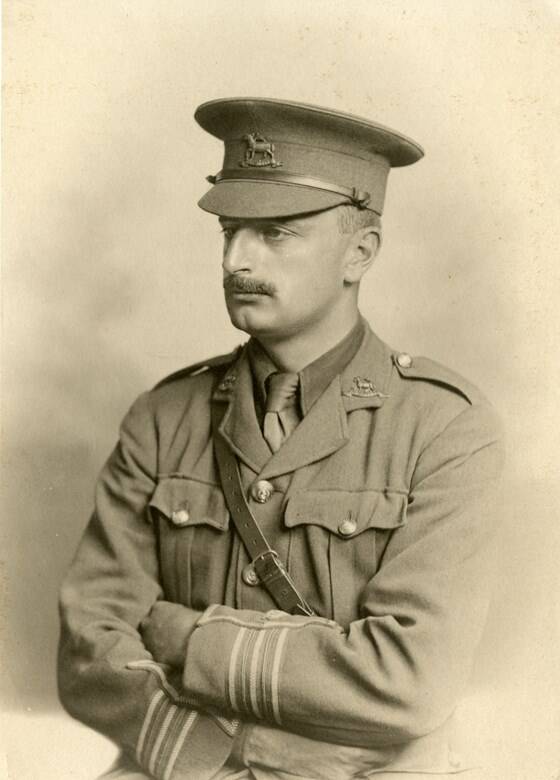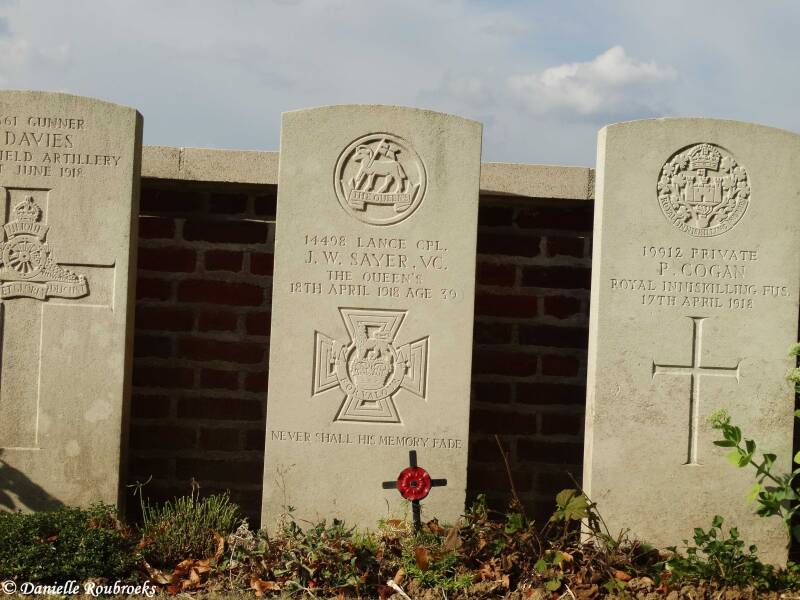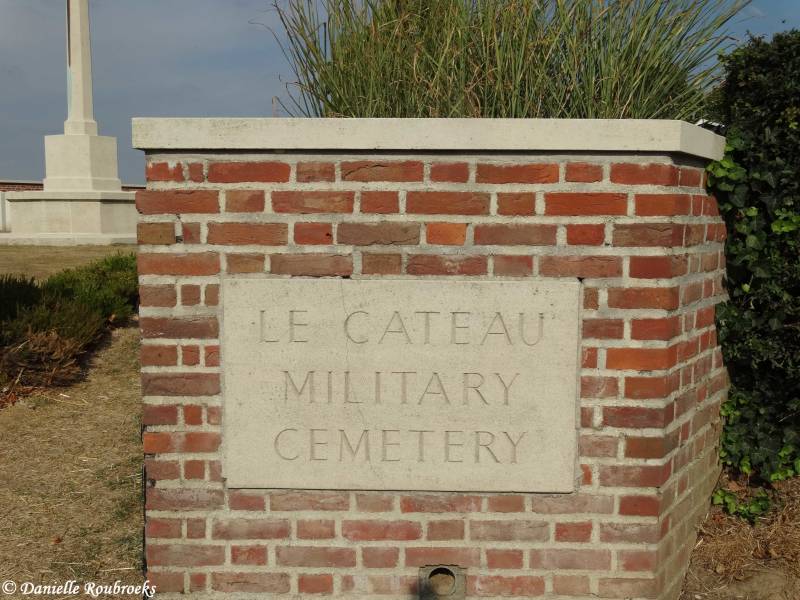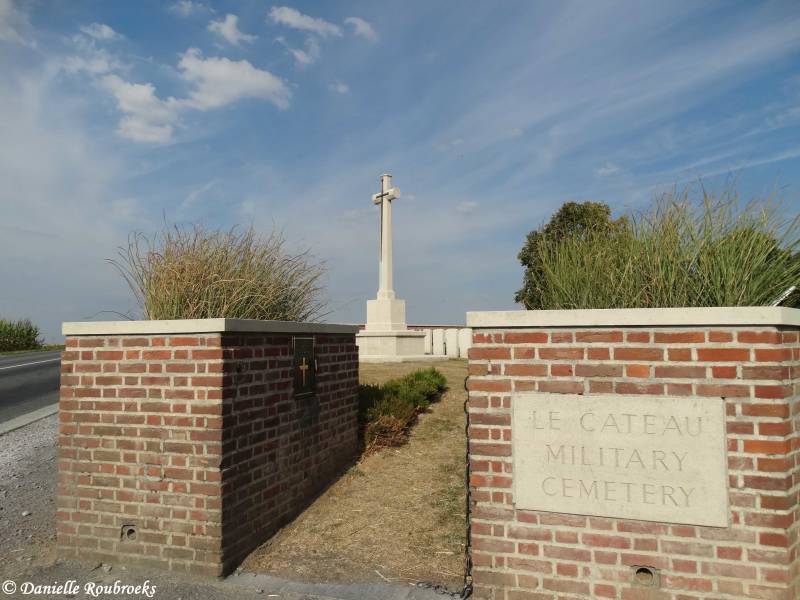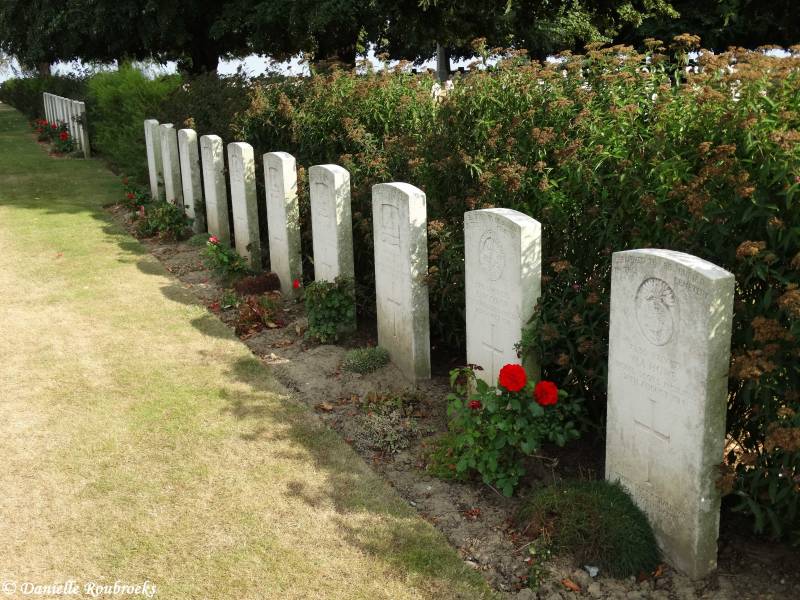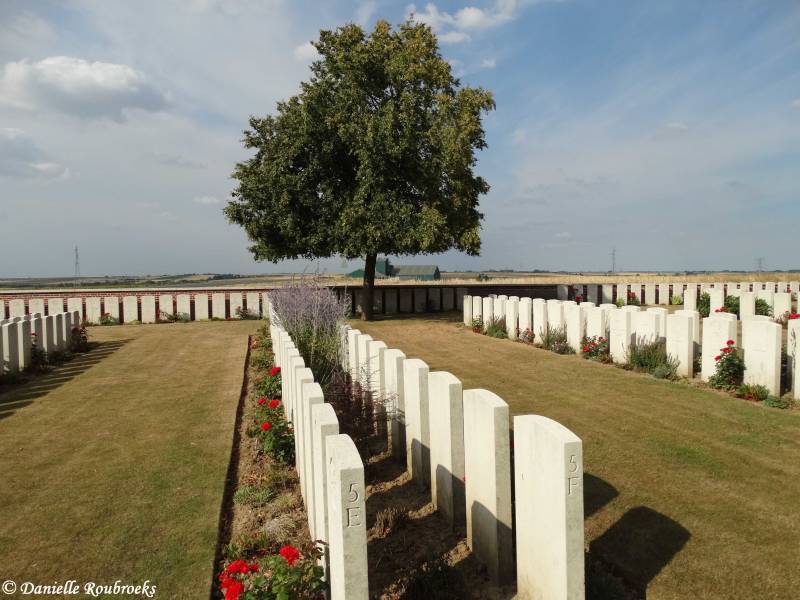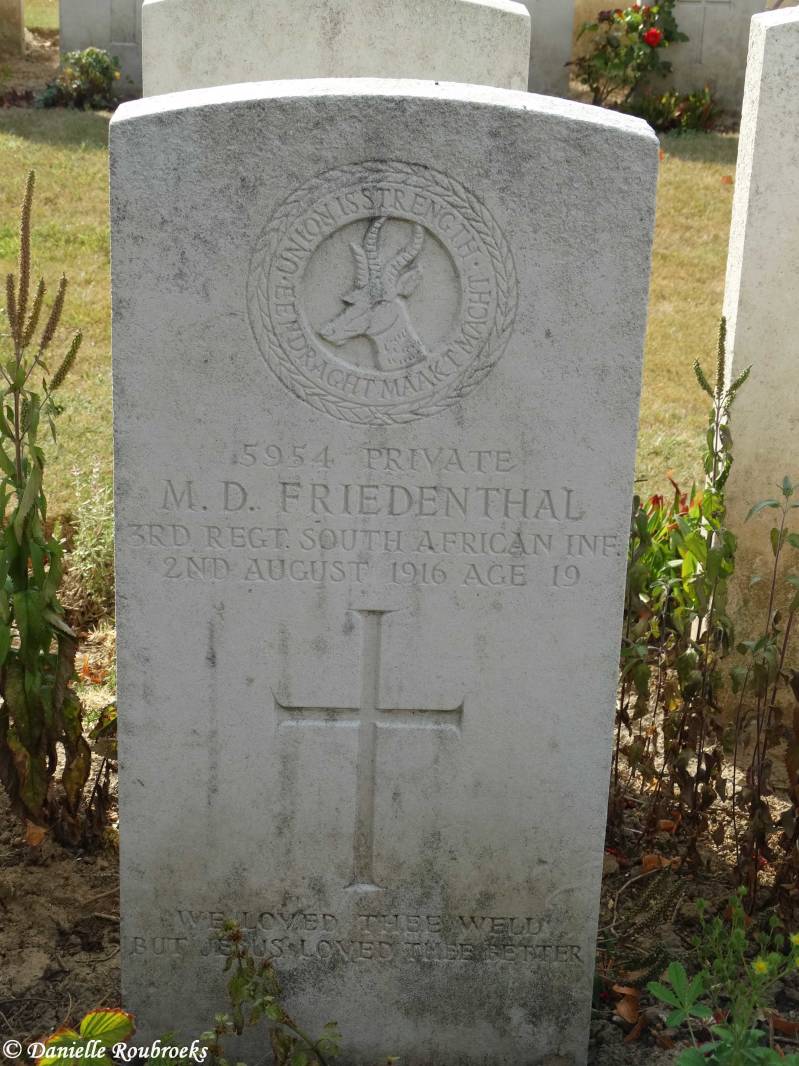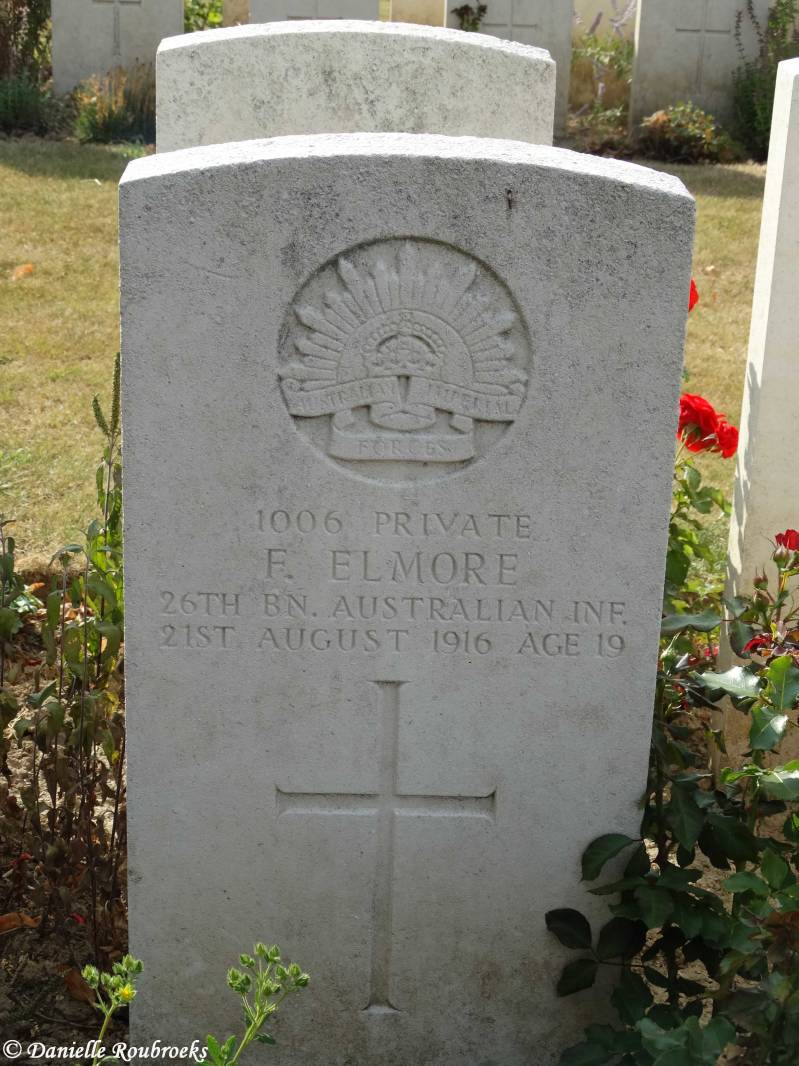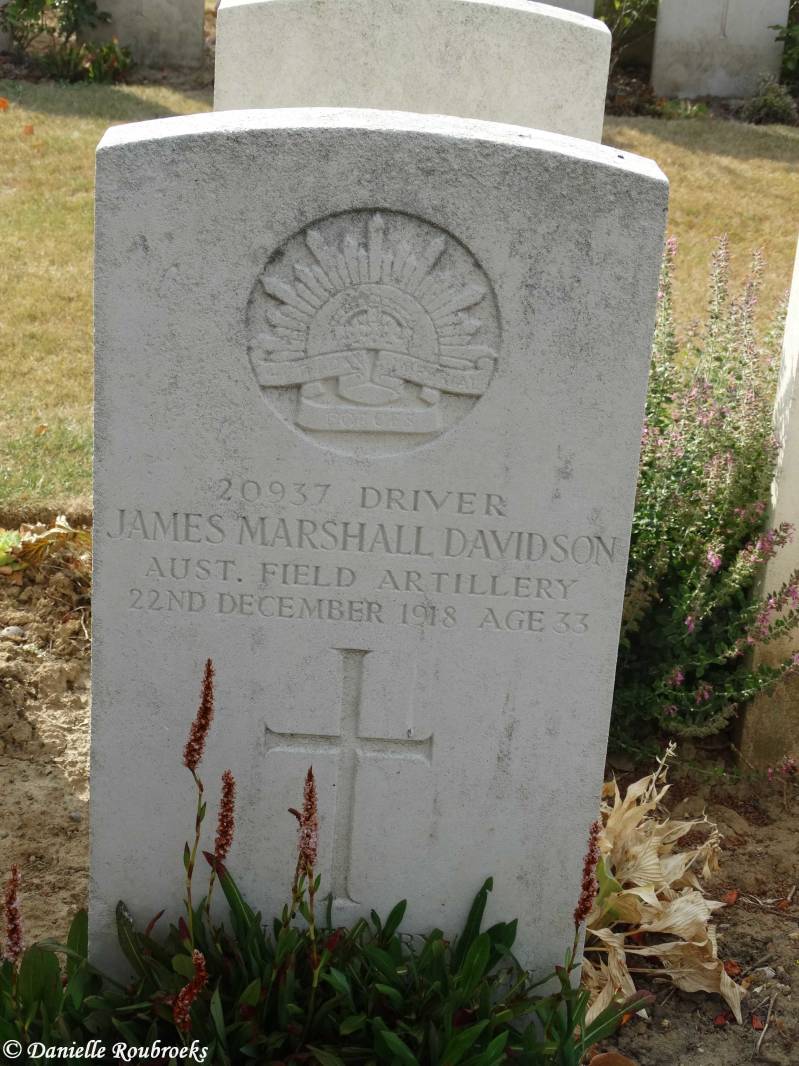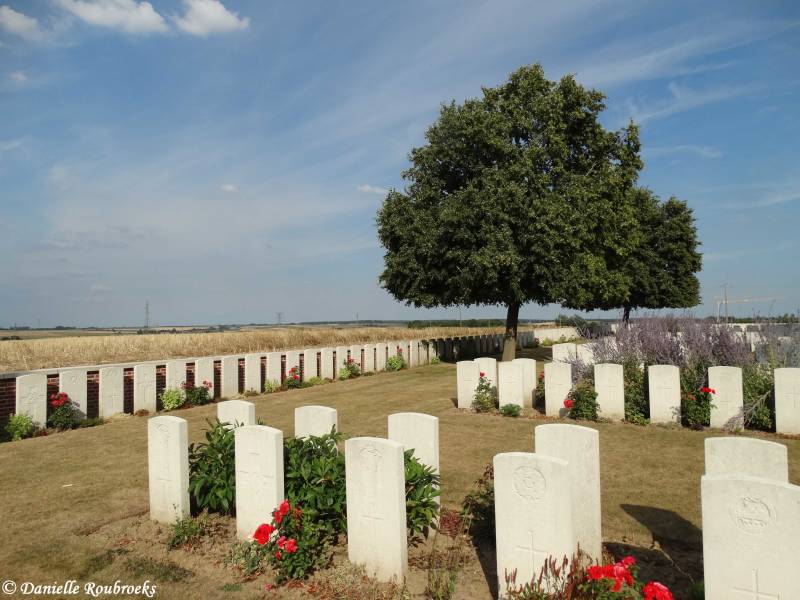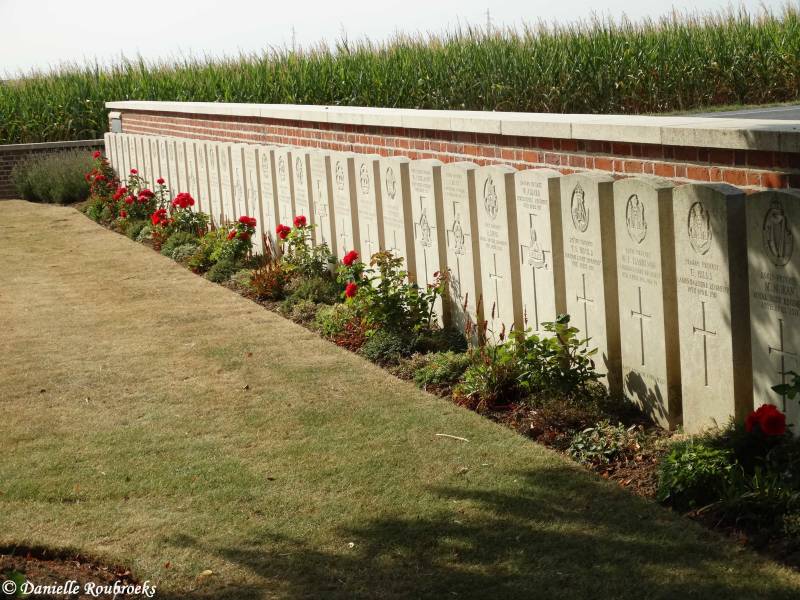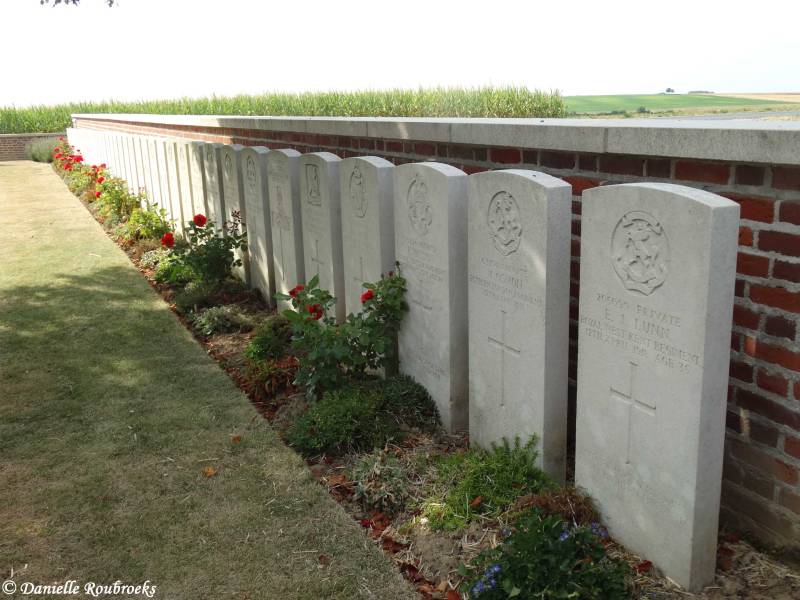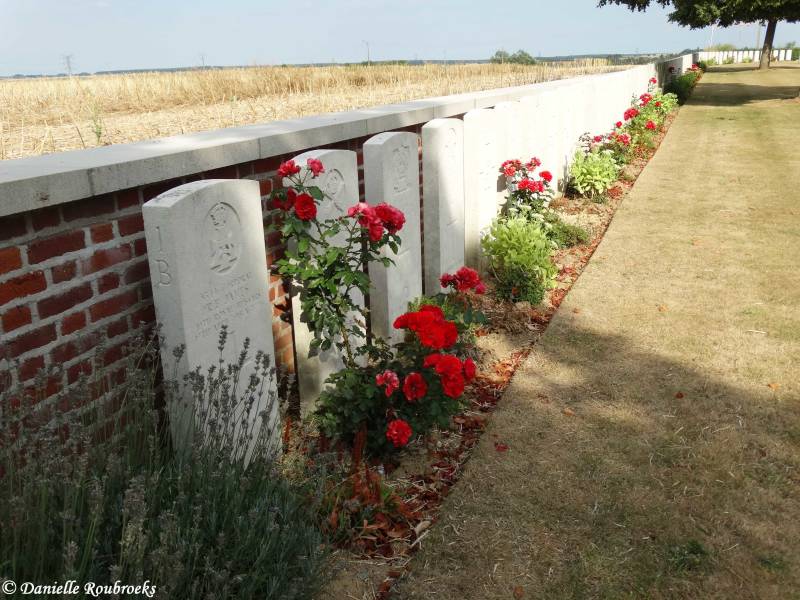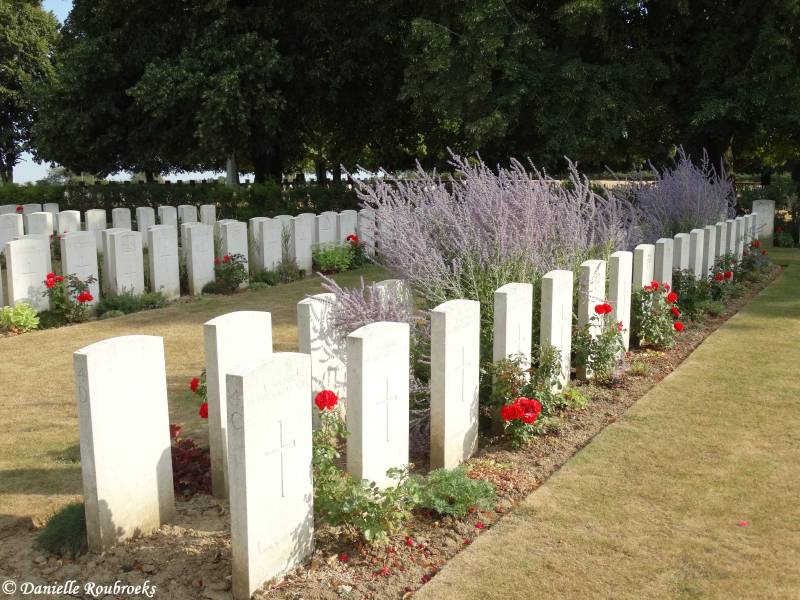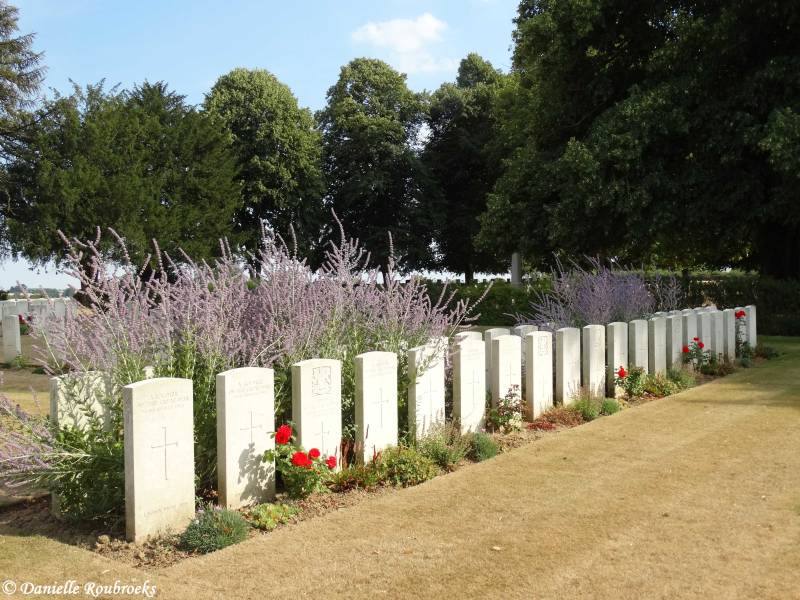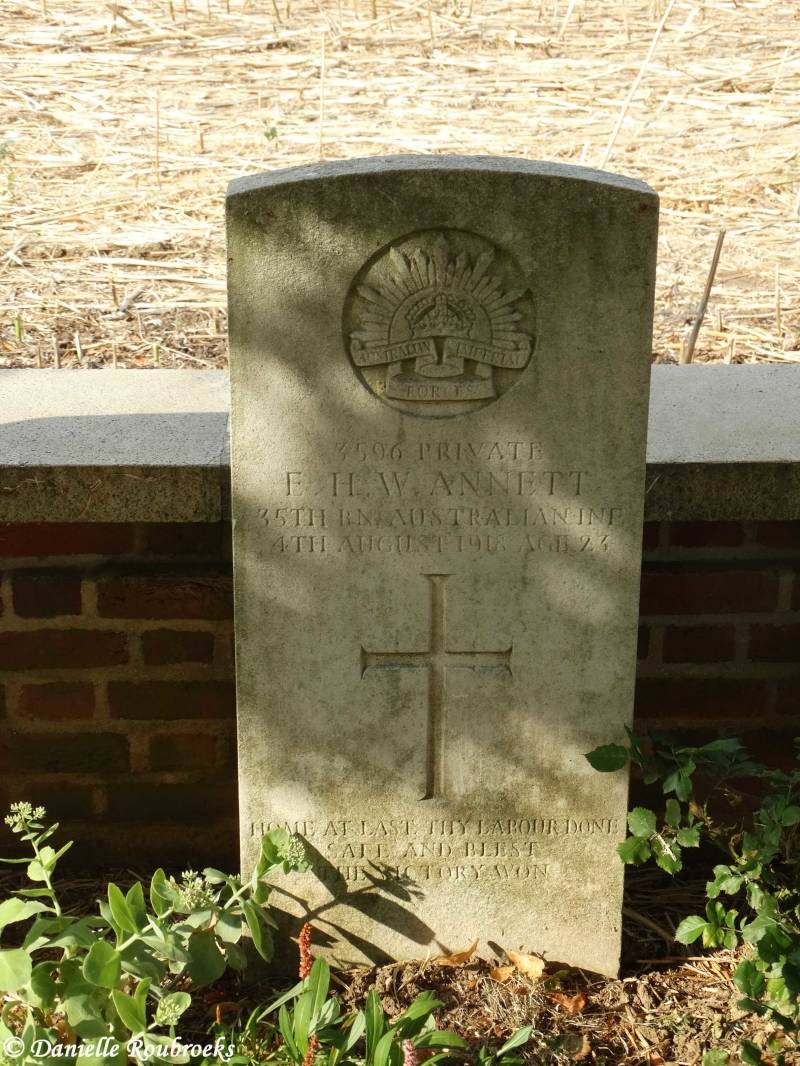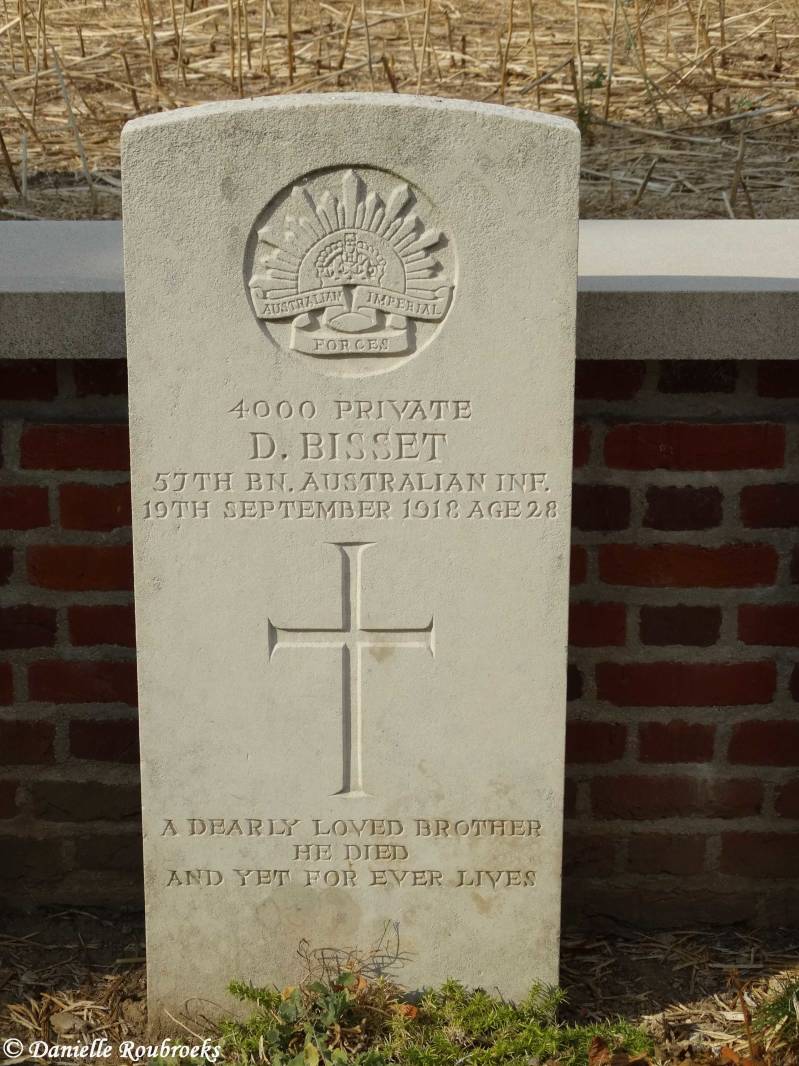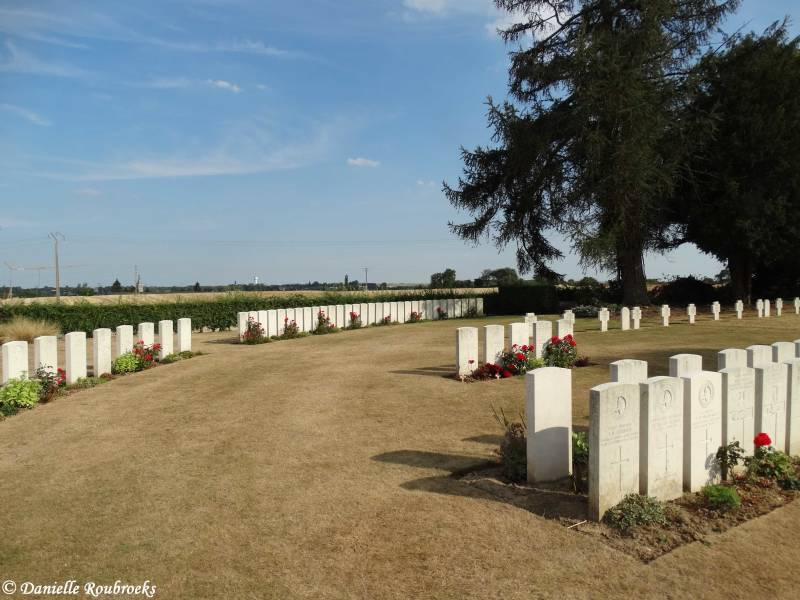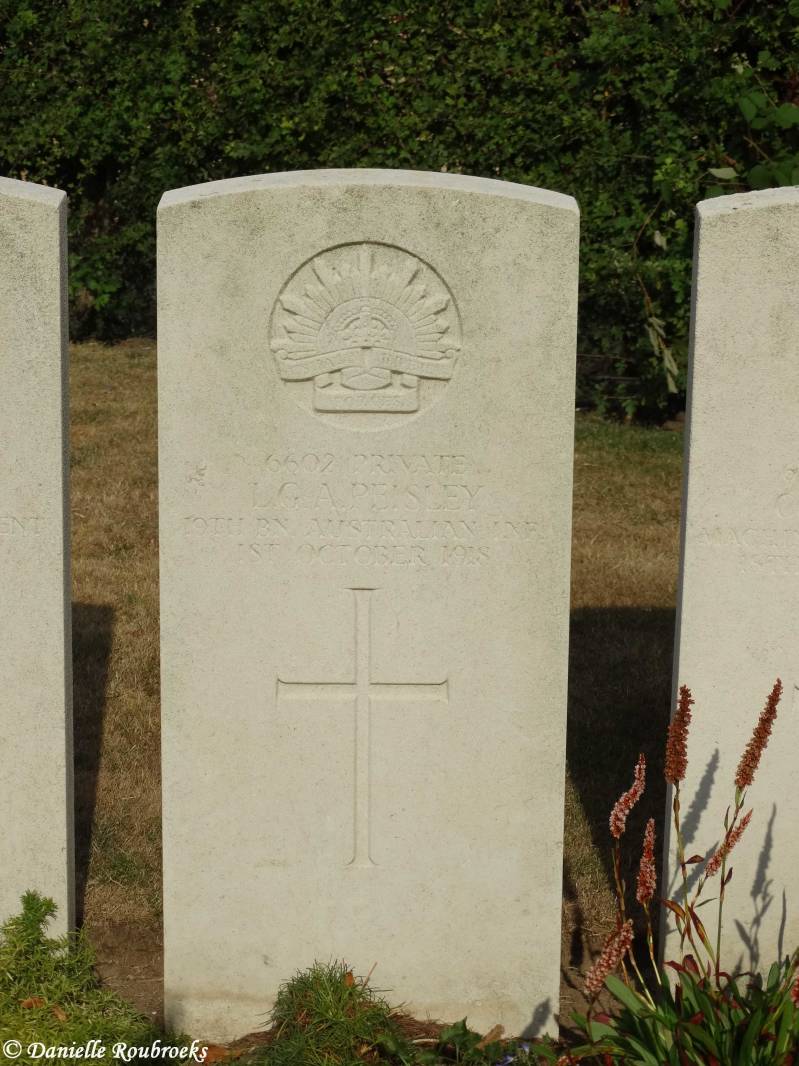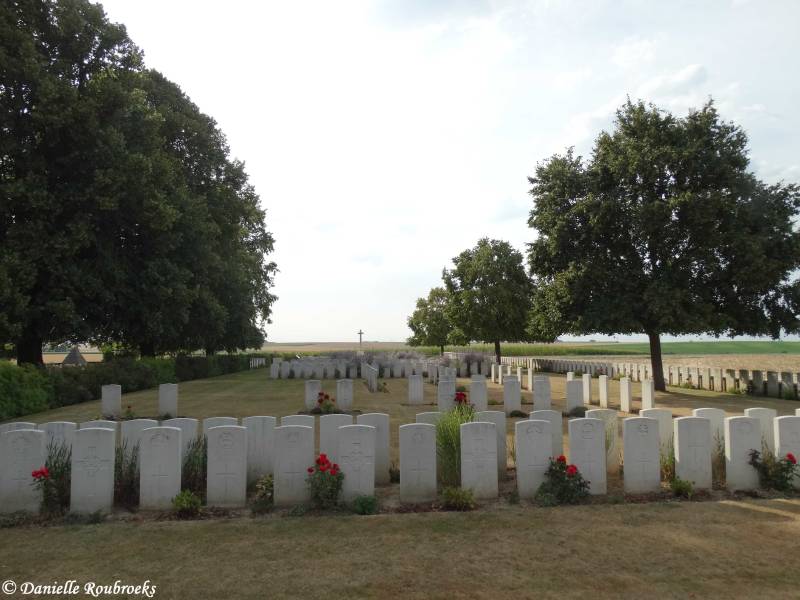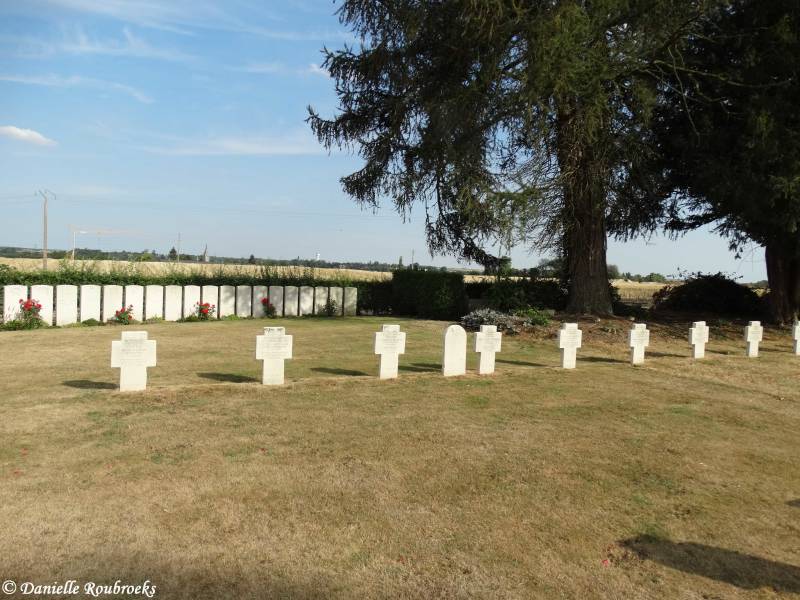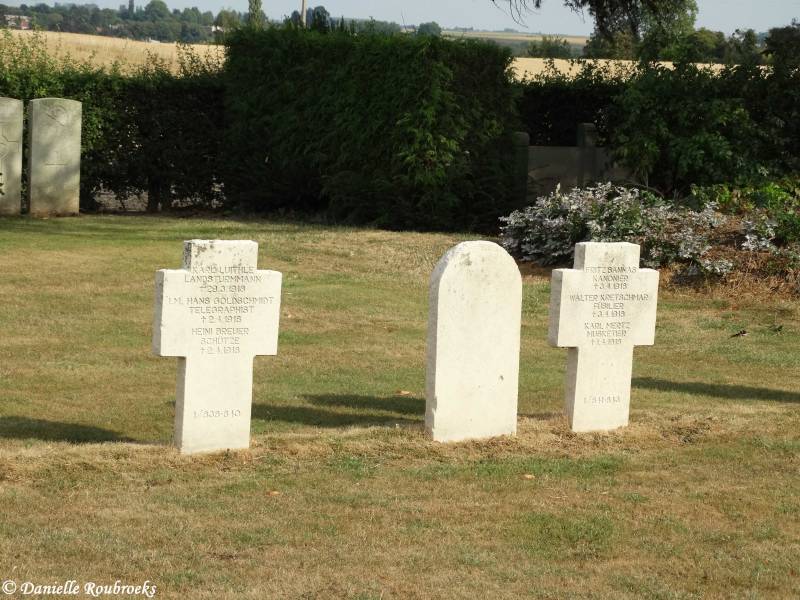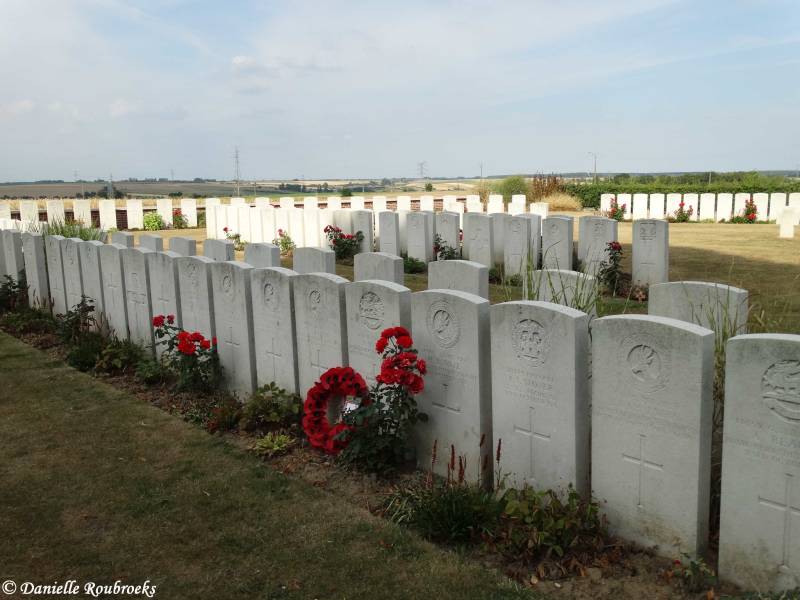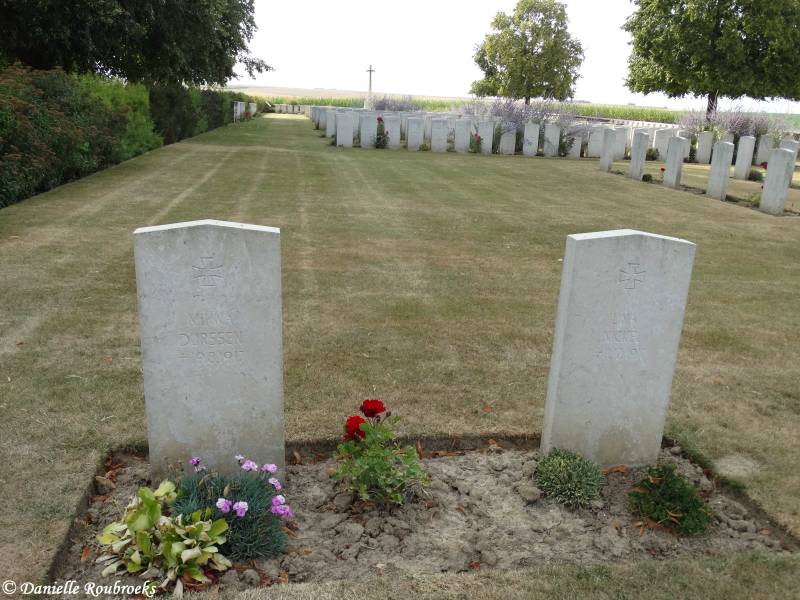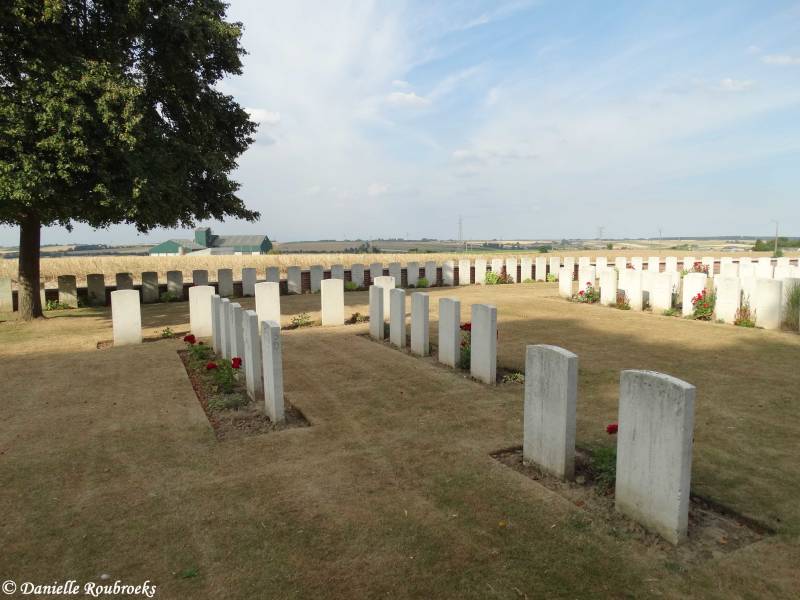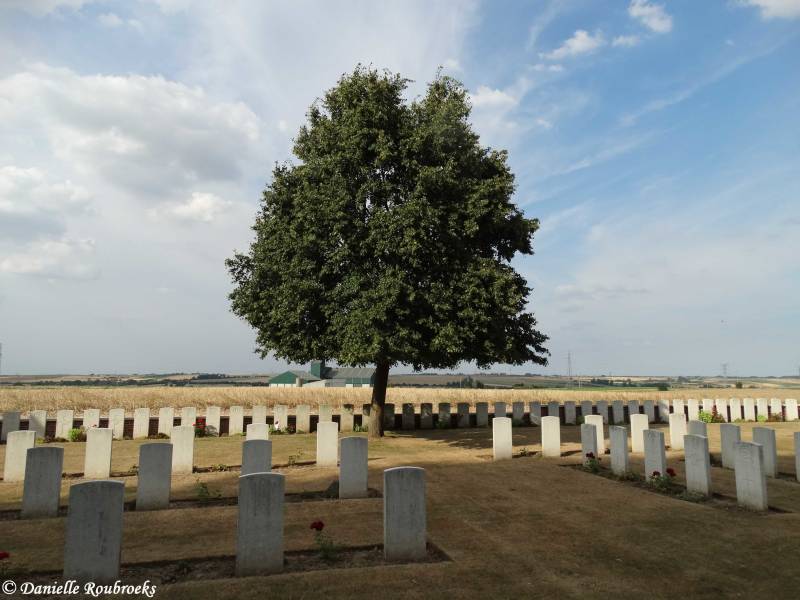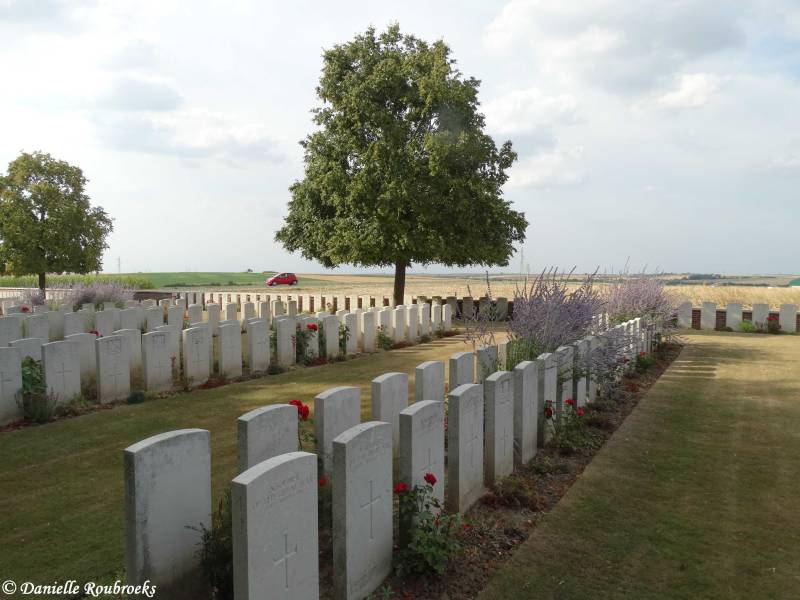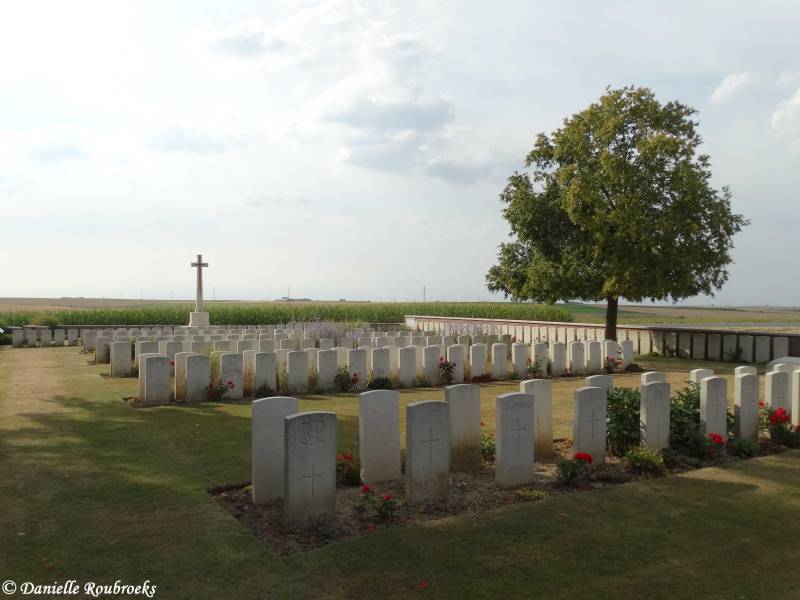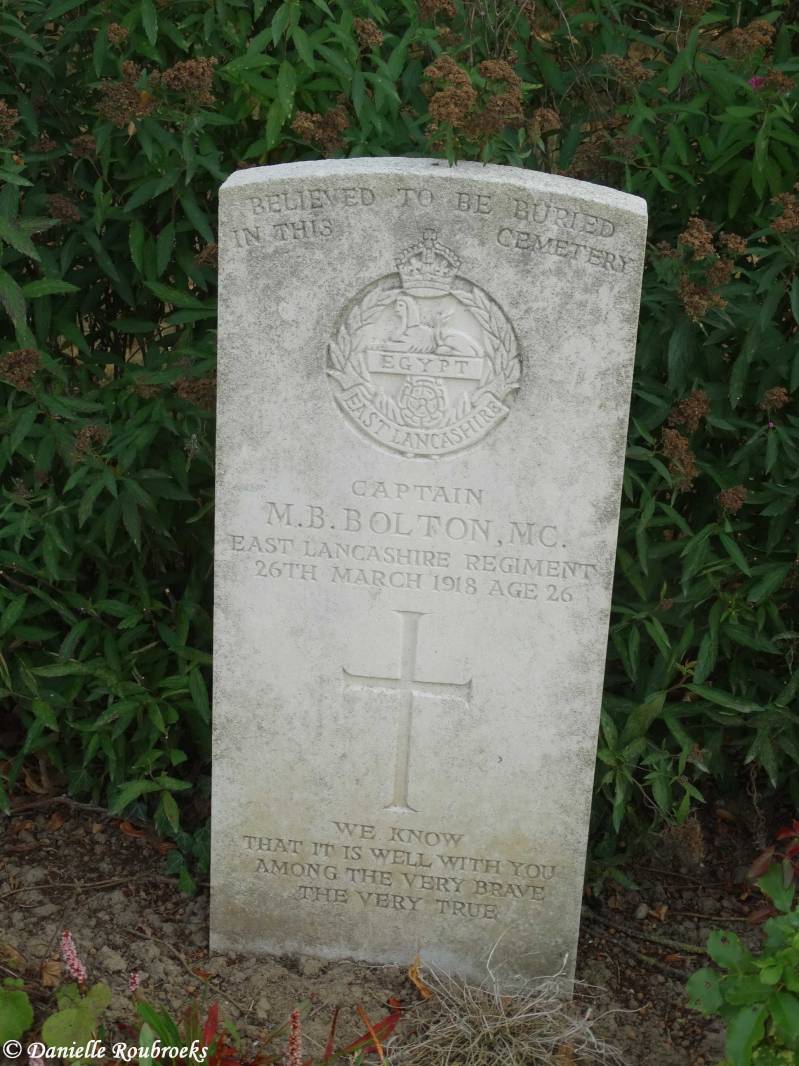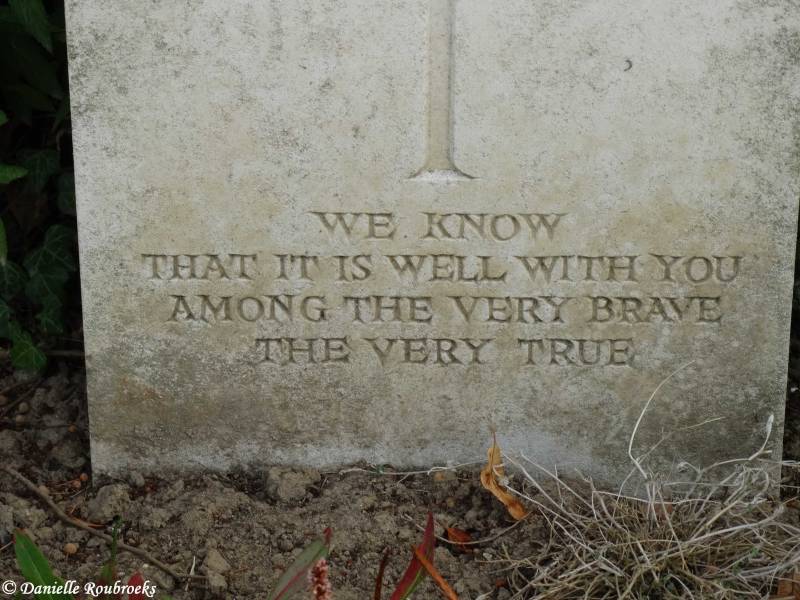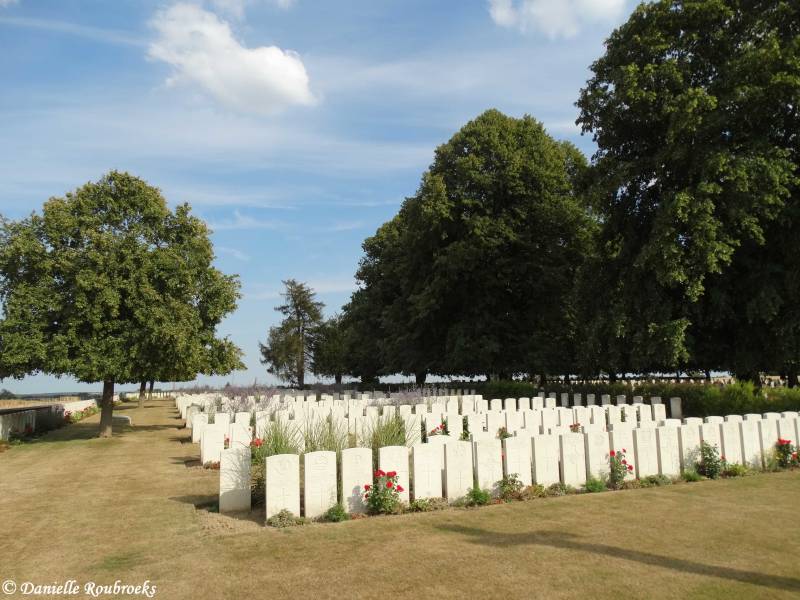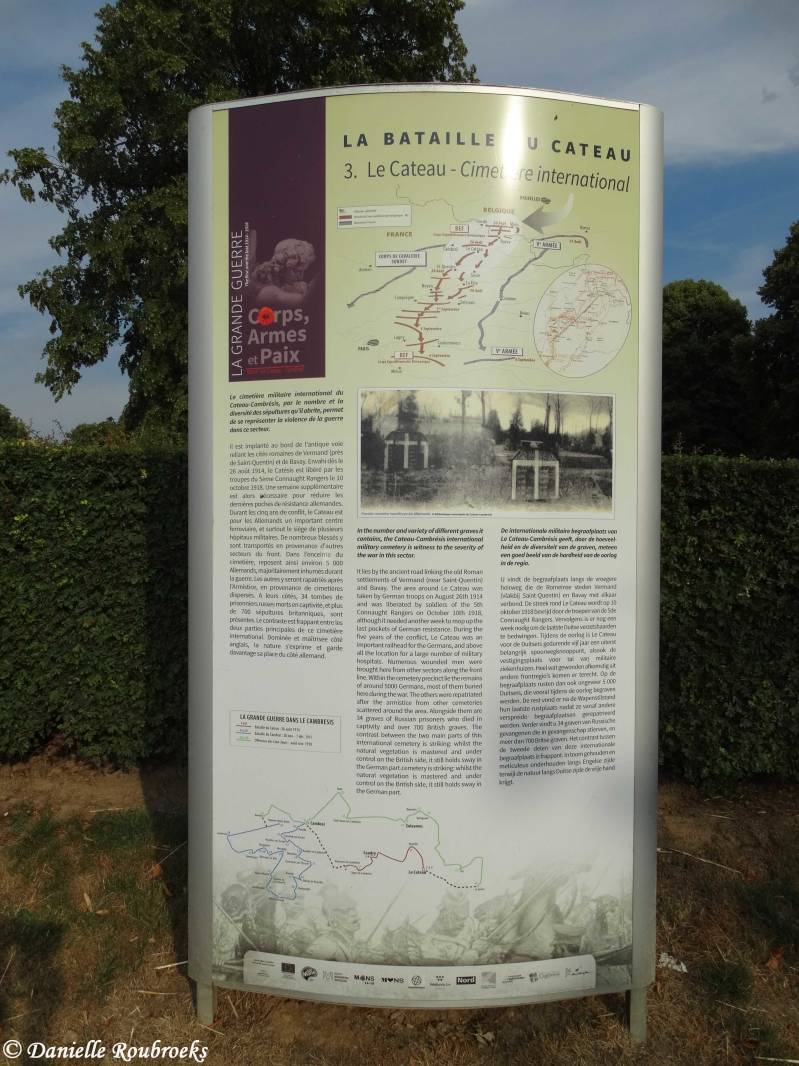Le Cateau Military Cemetery
Historical Information (Source: CWGC)
Le Cateau Military Cemetery Le Cateau-Cambrésis and the country to the west of it was the scene of a battle fought by the British II Corps on 26 August 1914 against a greatly superior German force. The town remained in German hands from that date until the evening of 10 October 1918, when it was rushed by the 5th Connaught Rangers and finally cleared a week later. During the war Le Cateau had been a German railhead and the site of an important hospital centre. The military cemetery was laid out by the Germans in February 1916 with separate plots for the Commonwealth and German dead. It contains the graves of over 5,000 German soldiers, many of whom were buried during the occupation, the rest being brought in from other German cemeteries after the Armistice. A separate plot contains the graves of 34 Russian prisoners of war who died in captivity.
The Commonwealth plot is the site of almost 700 graves and commemorations of the First World War.
Served with
- United Kingdom (477)
- South African (24)
- Australian (6)
- Canadian (2)
- German (2)
- New Zealand (2)
Served in
- Army (509)
- Navy (3)
- Air Force (1)
VICTORIA CROSS
Lance Corporal John William SAYER - 14498 - 8th Bn. The Queen's (Royal West Surrey Regiment)
Died 18 April 1918
Country of Service: United Kingdom
Awards: Victoria Cross
Citation
An extract from the "London Gazette," dated 6th June, 1919, records the following:-"For most conspicuous bravery, determination and ability displayed on the 21st March, 1918, at Le Verguier, when holding for two hours, in face of incessant attacks, the flank of a small isolated post. Owing to mist the enemy approached the post from both sides to within 30 yards before being discovered. Lance-Corporal Sayer, however, on his own initiative and without assistance, beat off a succession of flank attacks and inflicted heavy casualties on the enemy. Though attacked by rifle and machine-gun fire, bayonet and bombs, he repulsed all attacks, killing many and wounding others. During the whole time he was continuously exposed to rifle and machine-gun fire, but he showed the utmost contempt of danger and his conduct was an inspiration to all. His skilfull use of fire of all descriptions enabled the post to hold out till nearly all the garrison had been killed and himself wounded and captured. He subsequently died as a result of wounds at Le Cateau."
Grave Reference: I. B. 59.
(Source: Wikipedia)


